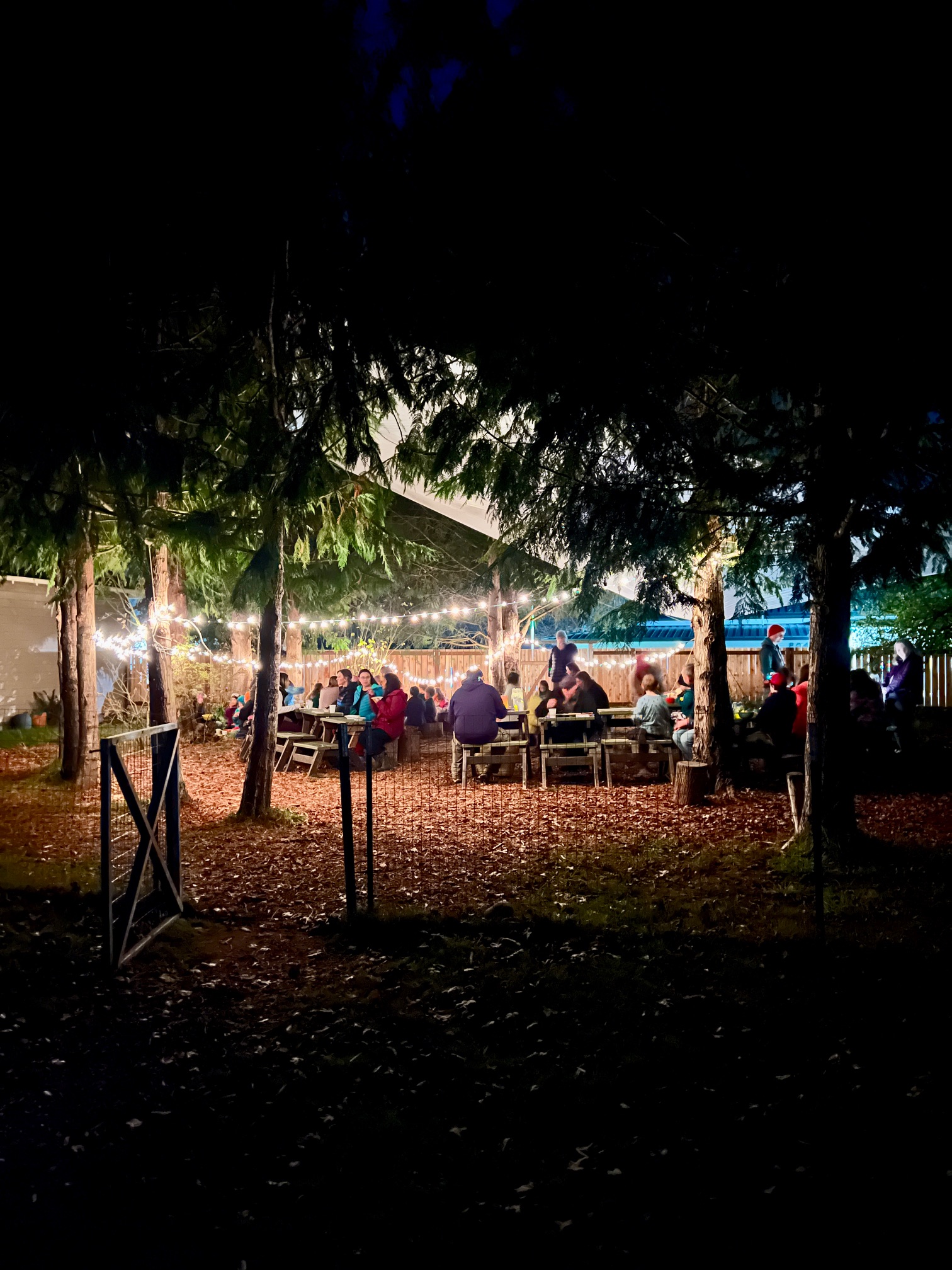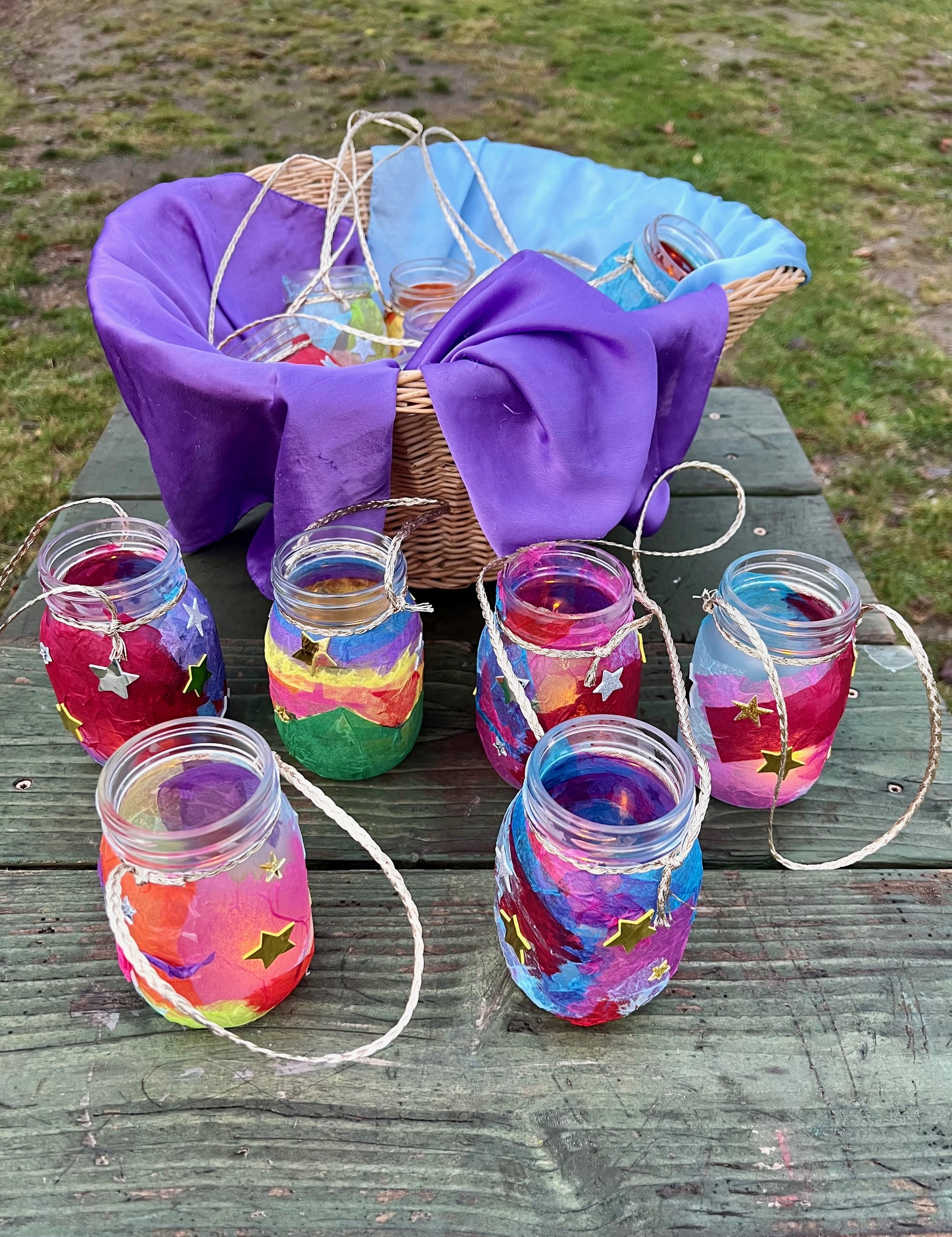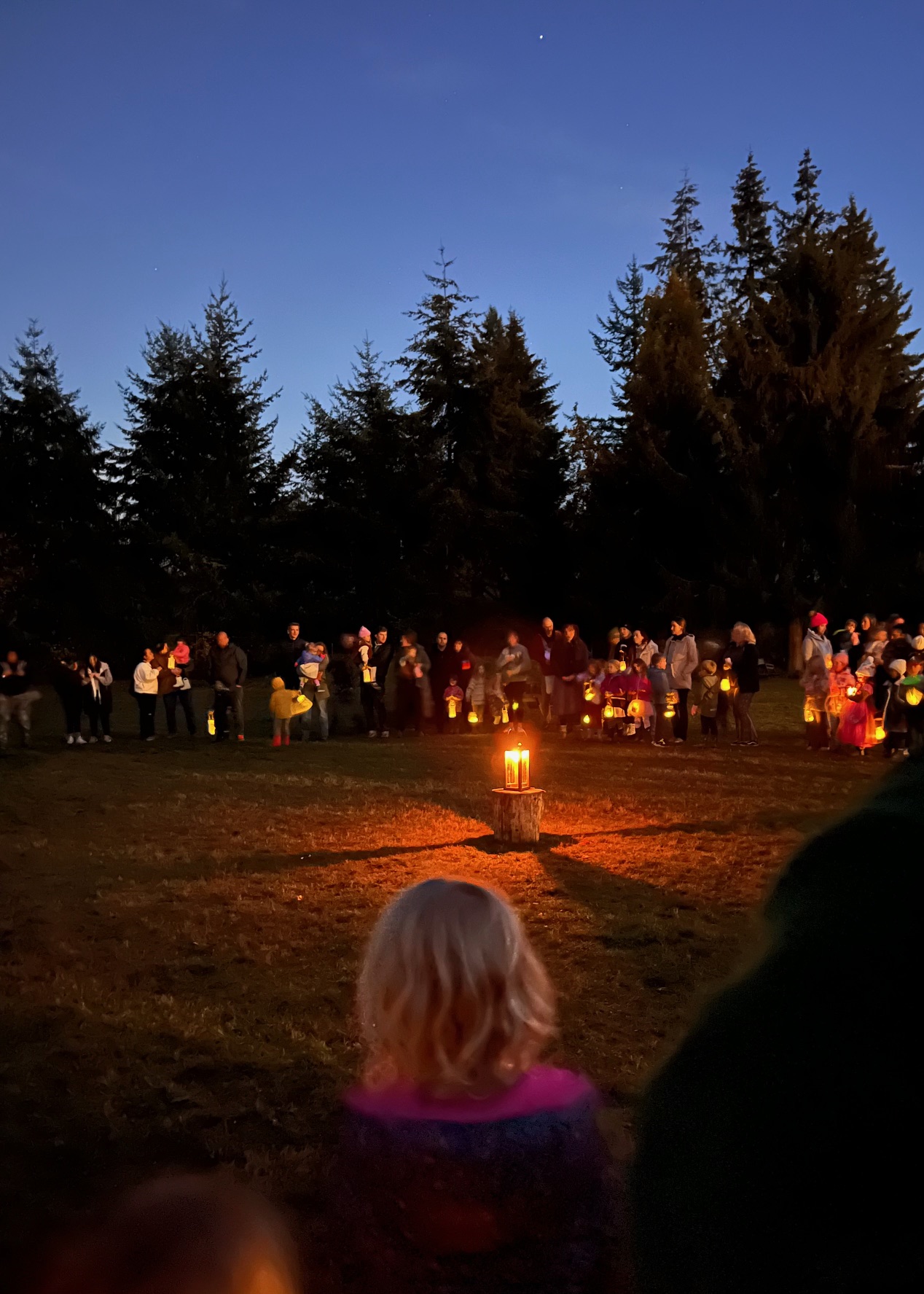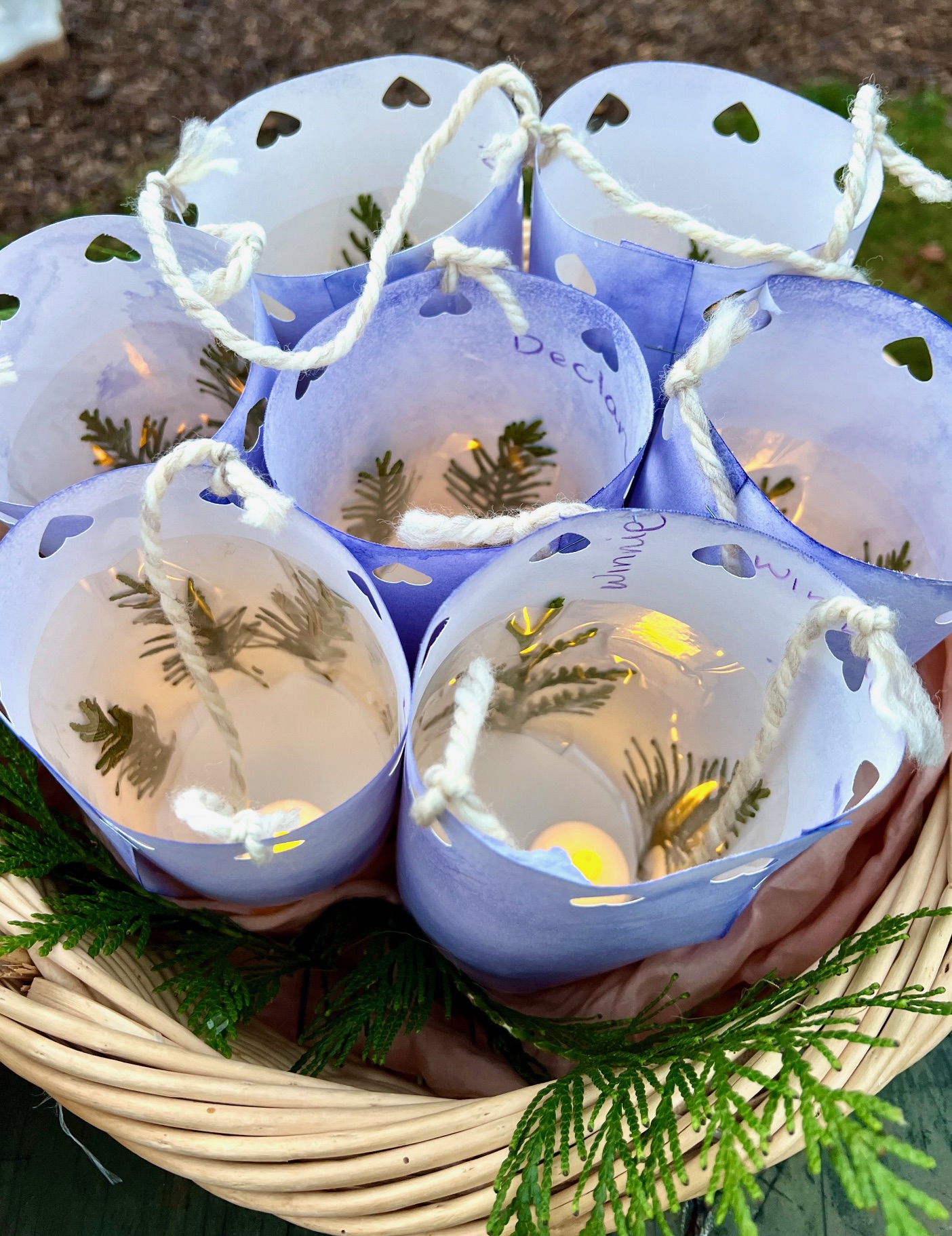The Lantern Walk is more than a cherished tradition at Olympia Waldorf School—it’s a journey into light, connection, and reflection during the darker months. In this blog, we speak with members of the school community to uncover the symbolism behind this beautiful ritual, its role in fostering togetherness, and the meaningful lessons it imparts to students, families, and educators alike. Join us as we explore the deeper intention behind the Lantern Walk and the warmth it brings to those who participate.
1. Can you share the significance of the Lantern Walk in and why it’s celebrated in November?
Festivals in general are a central part of Waldorf education and school life, and are a celebration of life and connection to the earth and the cycles of nature. This time of year, as we draw toward winter, our festivals and celebrations are geared towards going inward, toward finding the inner light, and coming together to help each other find the light. It is a contemplative time that focuses on fears, challenges, and finding internal strength and bravery.
The Lantern Walk is a festival that marks the threshold time of the year between long summer days and long winter nights. From Nature herself we can witness the in-breath of the Earth as she pulls the plants and animals back toward her. The leaves begin to fall and cover the ground with a blanket of protection and quietude. Many animals crawl into their dens to prepare for a long sleep. We humans also find ourselves now wanting to pull inward too, especially as the weather turns and the winds are blowing colder. Mid November marks the beginning of the darkest days of the year. Waldorf schools around the world gather in community, light their lanterns, and walk and sing their way into the darkness as a way of poignantly marking this time of year. But this type of celebration isn’t isolated to Waldorf, as the themes of fire and light are present throughout many cultures, and are a gentle reminder for each of us to find our inner light, nurture it, and help one another shine brighter together.

2. What do you hope the children take away from the Lantern Walk experience?
This year one of our early childhood teachers began our Lantern Walk for our youngest students on campus by sharing the story of a young girl who lived at the edge of a forest. Each day she went on long walks through the forest with a golden lantern. One evening in Fall when she was in the forest, it grew dark and she noticed that her golden lantern was not shining as brightly as it had been. The light of the lantern was growing dimmer and dimmer. One evening she met a traveler and asked him, “Why are you going through the forest with no lantern and yet the way is bright for you?” He replied “I live on the other side of the forest at the foot of the mountain of the Sun.” “Will you help me rekindle my lantern with a spark from the sun?” she asked? “If that is your wish, come with me,” he said. Together they went through the forest. At last they came to the foot of the mountain of the Sun and began to climb. They climbed higher and higher and higher. Finally she reached the peak of the mountain of the Sun. The little girl called out, “Father Sun. My lantern needs kindling. Please send a spark of your light that it may brighten my way in the dark world.” Father Sun looked down and said, “My light is always shining even when you cannot see it. It is always with you. So, look at your lantern, my child. Look, it shines brightly. And as long as the light shines in your heart the light in your lantern will shine. And all will be well.”
The beautiful story helps our students realize the potential that lives within every human being. Walking with the lantern is a visual example of the power of our inner light and how that light can grow as we gather as a community.

3. Could you describe some of the activities or rituals that surround the Lantern Walk? How do they help foster a sense of community and connection?
At our Olympia Waldorf School, we hold two Lantern Walks, one for our early childhood program, and one for grades 1-3. This is a very special event for the early childhood students, and is held by the faculty very deeply. It can be overwhelming for young ones to be outside in the dark, but having this special time for our younger students to gather allows for a more quiet and contemplative walk for our littlest friends. We gather together at dusk and enjoy hot cider and popcorn. As darkness falls, our faculty gathers the families together with a song. The story from above is shared, the lanterns are lit and the procession begins. Songs that the children have been learning are sung with reverence, and a calm meditative mood is set, reminding us that while our light seems small and fragile, together we can bring a collective light to the darkness. The walk ends in a circle with a final song, a moment of silence, followed by a final lullaby.
For our grades celebration, the 1st through 3rd graders spend time in class making lanterns, and every year the lanterns are different. All the older students are invited to walk together singing songs they’ve sung for years, holding the flame of humanity to find community in a time that’s dark and cold. At the end of this celebration, it is traditional to have seasonally appropriate foods and a bonfire to warm ourselves. This year we feasted outside with a soup potluck, bread and cider around the campfire. This warmth and feeling of connection filled the cups of many families!

5. How are the lanterns made, and what does the process of creating them teach the children about craftsmanship and artistry?
The lanterns begin with a base, many times a glass jar or oiled watercolor paper paper shaped into lantern form. Natural elements are added for decoration such as leaves or sticks. Many times tissue paper is used to decorate the glass jar and keep the structure translucent. A carrying handle is then added which can be wire, a stick or yarn (if not using real candles). Throughout the years the students will make different lanterns which makes for a very sweet collection for the home as no two lanterns will ever be the same!
The importance of making the lanterns by hand is a deeply rooted notion in Waldorf pedagogy. The act of creating things with your hands impacts not just the mind, but the emotions and senses as well. This practice fosters a deep connection to the learning process, builds patience, develops new skills and creates a sense of pride by allowing the students to see the tangible results of their efforts. It engages their entire body, their head, their heart and their hands.

6. How does the Lantern Walk help children understand the concepts of light and hope, especially as we move toward the darker months of the year?
Lantern Walk instills a sense in our children that no matter the fears or challenges they may face, especially in the darkest months of the year, they have a light inside them. Their inner light is a light of strength and bravery. And, when the community gathers together, each individual light becomes one collective light that shines very, very bright.

